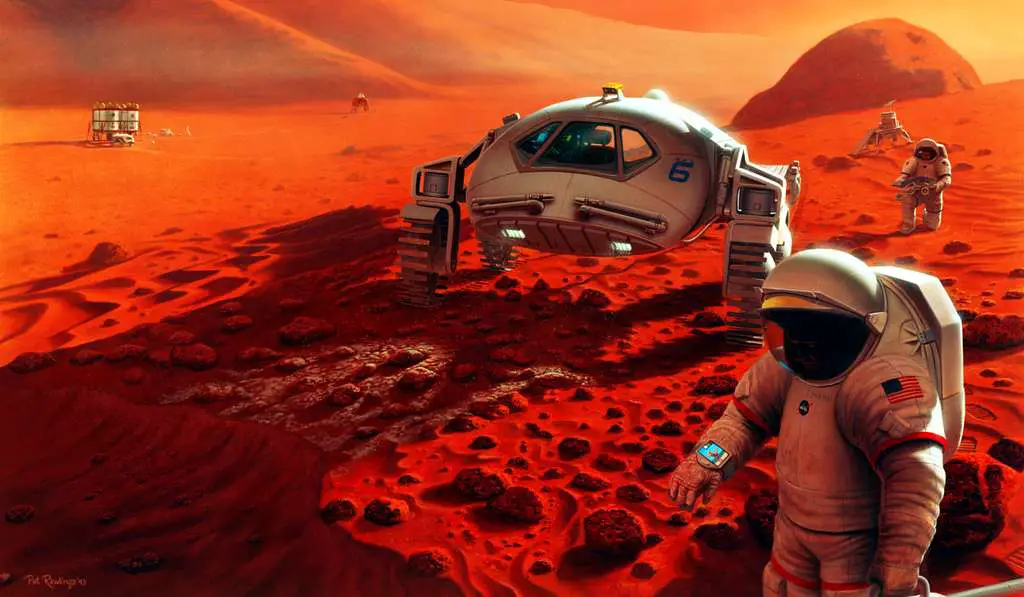Since the beginning of the space race, the idea of traveling to Mars has piqued the interest of people from all walks of life, including scientists, space fans, and the ordinary public. Mars, which is considered to be the next significant major frontier in human space travel, has become the focal point of numerous ambitious missions and plans by various space agencies, including NASA. This essay explores the issue that has been on many people’s thoughts for a long time: When will NASA send a mission to Mars?
Unveiling the Artemis Program
NASA’s principal focus in recent years has been on returning humans to the Moon with the Artemis program; but, the agency has also been actively working on the future exploration of Mars. The Artemis program was just unveiled. The ultimate objective of NASA is to deploy astronauts to Mars in order to set the groundwork for long-term human habitation as well as scientific investigation of the red planet.
Current Mars Missions
Missions to Mars Currently Underway For the past few decades, NASA has been sending robotic missions to Mars in order to gather vital data and pave the going for future human exploration. One of the most recent accomplishments of the organization is the landing of the Perseverance rover on Mars in February of 2021. This state-of-the-art rover is fitted with cutting-edge scientific equipment to hunt for indications of microbial life from the planet’s distant past and test technology for use in future human expeditions.
The Artemis III Spacecraft: A Gateway to Mars
The Artemis program of NASA intends to build a human presence on the Moon that is both permanent and self-sufficient by the year 2024. The technology, equipment, and capabilities necessary for Mars missions will be tested on the Moon prior to their deployment on that red planet. It is anticipated that the Artemis III mission, which is set to take place in the middle of the 2020s, will be the first crewed mission to land on the lunar surface since the Apollo era. Additionally, it will lay the basis for future trips to Mars.
The Journey to Mars
NASA envisions a three-phase method to getting humans to Mars, notwithstanding the fact that a precise date for such a mission is not yet known. The first step is to demonstrate that it is possible to survive and function normally on Mars for limited amounts of time. This may be accomplished with a series of flights to Mars’s moon Phobos or other cislunar destinations. In the second phase, humans will remain on Mars’ surface for longer periods of time, possibly lasting several months or even an entire year. The last phase will involve the development of a permanent presence on Mars, during which time astronauts will engage in activities such as study and exploration for lengthy periods of time.
Challenges and Collaborations
The voyage to Mars is not going to be easy, and there will be many opportunities for collaboration along the way. There are tremendous technological, logistical, and physiological hurdles to overcome in order to accomplish interplanetary travel. Together with international partners such as the European Space Agency (ESA), NASA is combining their respective resources, exchanging their respective areas of knowledge, and working together to overcome these obstacles. Collaborative efforts and public-private partnerships will be of critical importance to the accomplishment of the goals set for the Mars exploration program.
Technological Innovations
NASA is making significant investments in cutting-edge technologies with the goal of overcoming the challenges associated with traveling through space for extended periods of time. These advancements include improvements to life support systems, radiation shielding, propulsion systems, and landing techniques with a high degree of precision. In addition, the organization is investigating methods of in-situ resource utilization, also known as ISRU, with the goal of extracting and utilizing resources on Mars, such as water ice, in order to provide for the sustenance of astronauts during their stay.
Although the specific timescale for a crewed mission to Mars is not yet known, NASA’s dedication to conducting exploration on the Red Planet is unshakable. Inching humanity closer to the realization of a human journey to Mars will be the invaluable lessons gained and technologies produced as a result of the Artemis program paving the way for lunar exploration. NASA and its partners are making steady progress toward their ultimate objective of sending astronauts on a historic voyage to the Red Planet, where they will uncover its mysteries and increase our understanding of the cosmos. This objective will be accomplished through worldwide collaboration and unrelenting innovation. It’s possible that NASA will send a mission to Mars sooner than we think it will.
![]()
